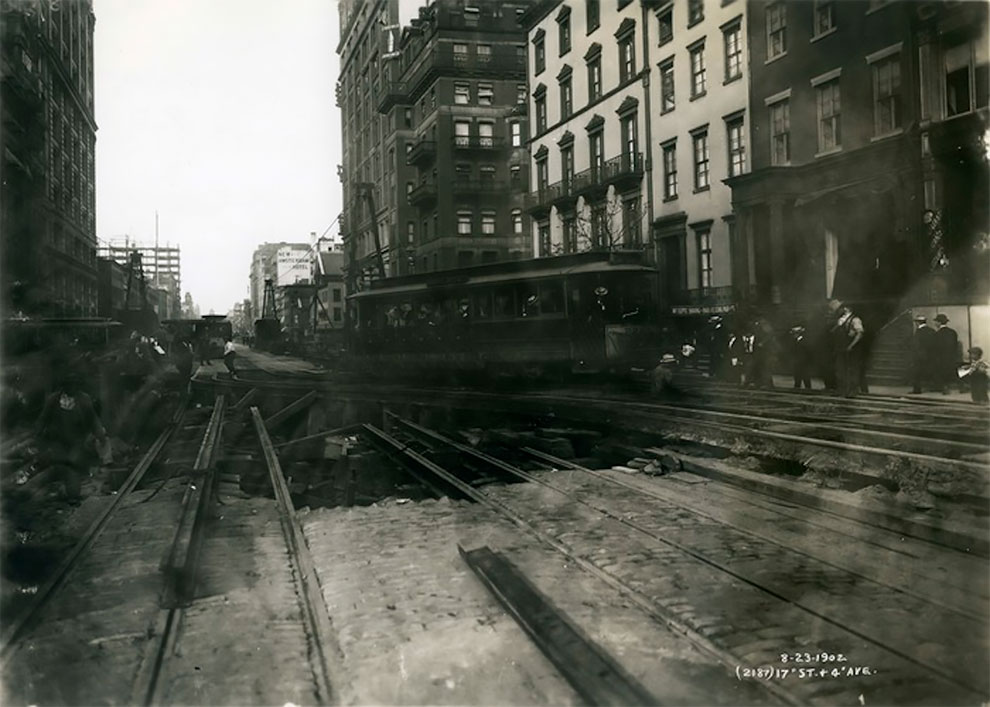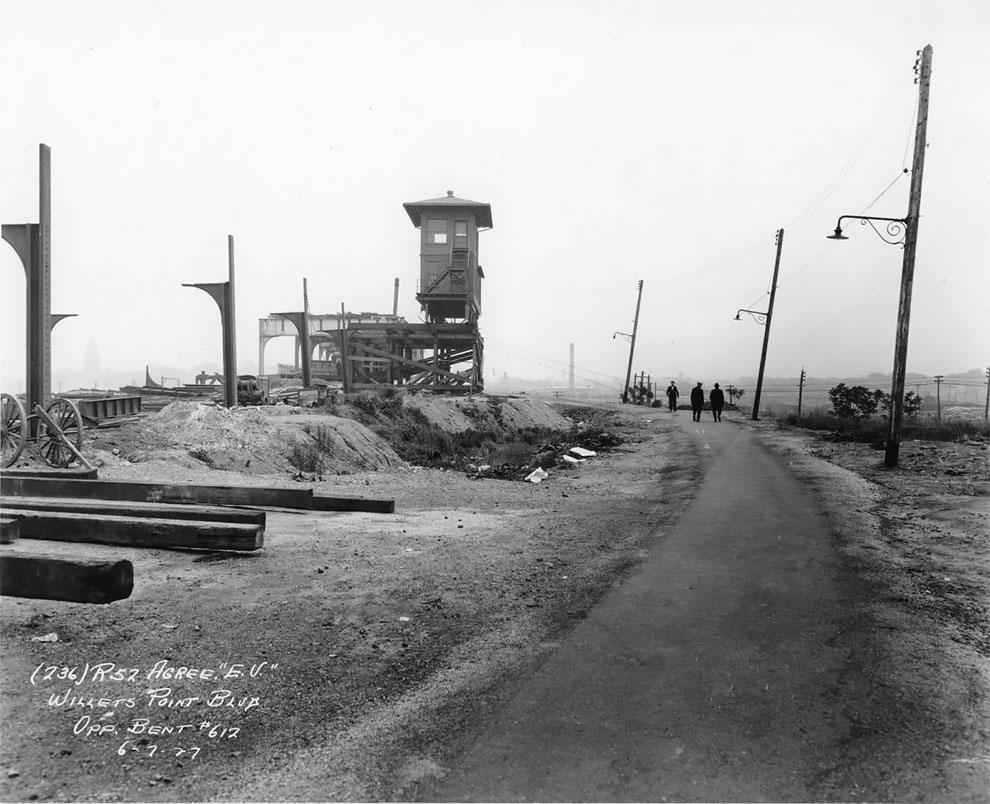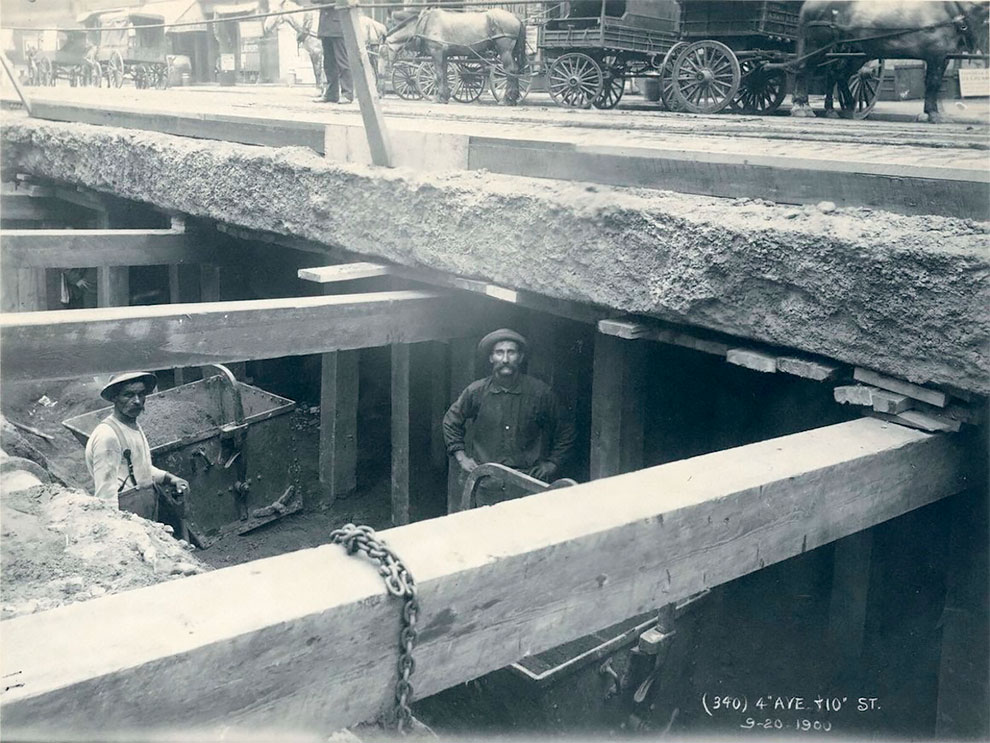Two Brothers Photographed Every Stage Of The NYC Subway Construction, From 1900-1939

Using cameras with 8-by-10-inch glass negatives,” the brothers “were assigned to record the progress of construction as well as every dislodged flagstone, every cracked brick, every odd building and anything that smelled like a possible lawsuit.
In 1900, contractor Rapid Transit Subway Construction Company “embarked on not only a construction project of unprecedented scope,” writes Christopher Gray at The New York Times, “but also a program of photographic documentation without precursor.” That project was the construction of the New York City subway system, the largest and one of the oldest rapid transit systems in the world. Construction continued for the next forty years (and continues still) as the number of lines expanded under two privately-owned systems, both purchased by the city in 1940.
h/t: flashbak
Workers in pump-chamber – The Bronx 1916

Through it all, two brothers, Pierre and Granville Pullis, and their assistants documented the enormous undertaking in hundreds of thousands of photographs. Despite its massive scope and industrial purpose, the Pullis brothers’ project was, for them, much more than a lucrative, extended assignment.
9th Street Subway entrance Brooklyn, 1910

Pierre first served as lead photographer, then his slightly younger brother took over until 1939. The photographers braved some of the same dangers as the workers, and their photos, as The Brooklyn Daily Eagle reported as early as 1901, “are as interesting as they are difficult to obtain. In many cases, Mr. Pullis and his assistants are obliged to place their cameras in perilous positions in order to photograph the face of a rock or the effect of a blast, and taking flashlight pictures knee deep in a twenty-five foot sewer.” They meticulously documented a rapidly changing urban landscape, both above and below street level.
Lexington Avenue between 105th and 106th Streets, Manhattan, 1913

Perhaps of interest to most viewers today, the photos also humanize the mostly anonymous workers, showing them in relaxed, unguarded, and unscripted poses. They create a sense of intimacy over the distance of a hundred years and more, as we gaze at streets dominated by horses and carriages while a vast, modern transit system takes shape underground.
“A lot of the people in these photographs, we’ll never know their names,” says Jodi Shapiro, curator of the Transit Museum exhibit. “But we know their faces. That’s our privilege—to let people know, these are the people that built this. Somebody photographed them and cared enough about them to make them look dignified in their work.”







